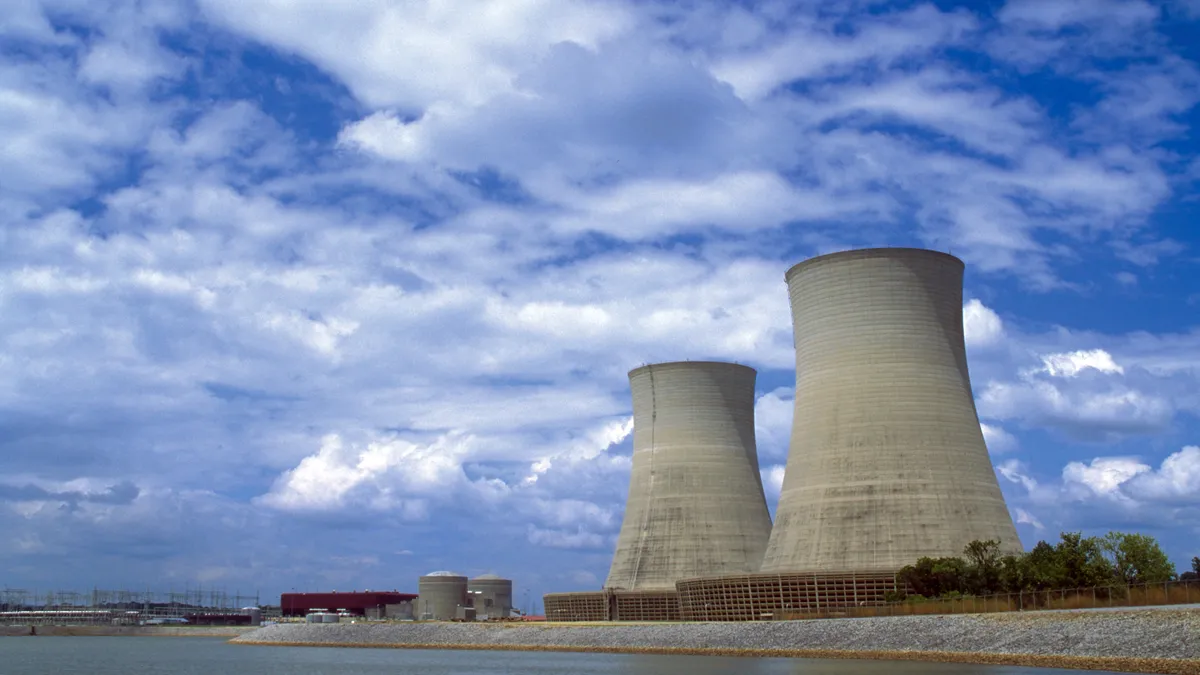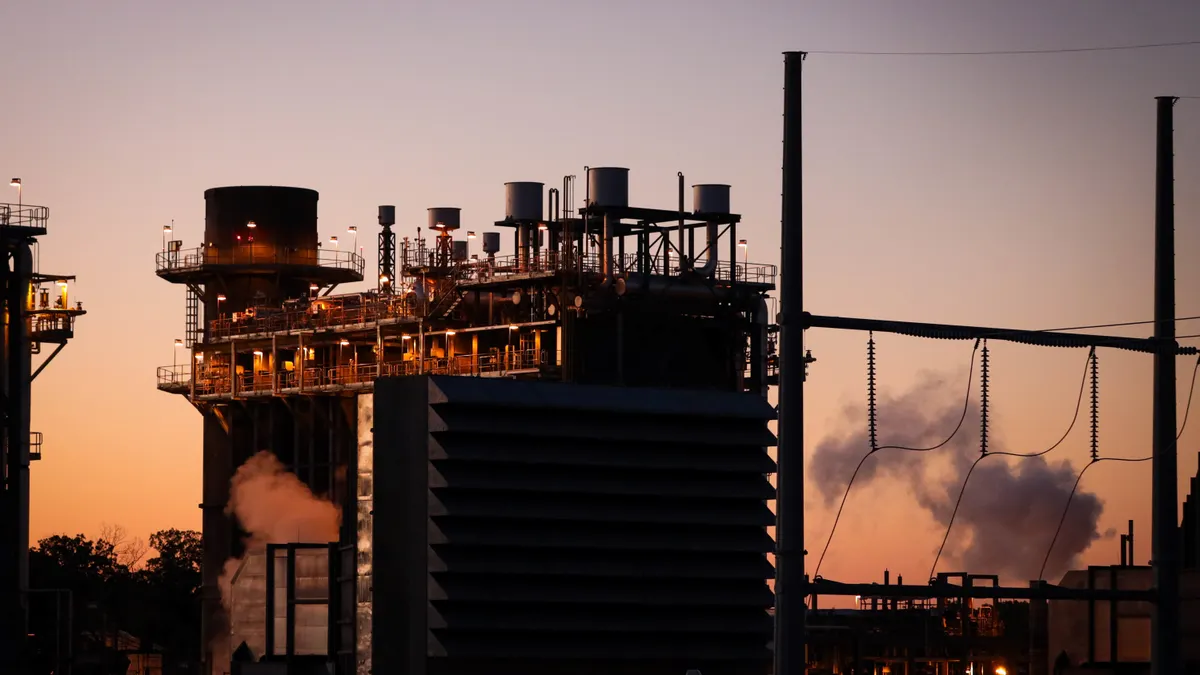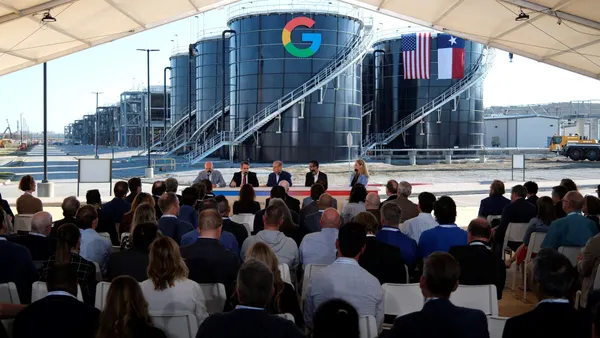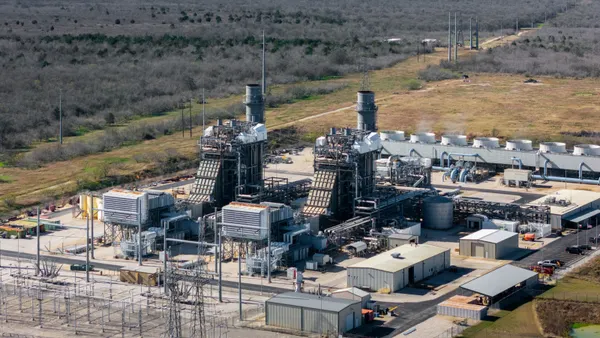Dive Brief:
- The Tennessee Valley Authority on Tuesday became the first American utility to submit a small modular reactor construction permit application to the Nuclear Regulatory Commission.
- The application is a key step in TVA’s plan to build a 300-MW SMR by 2032 at its 1,200-acre Clinch River Nuclear site in Tennessee. Non-nuclear construction could begin next January “or sooner” as the NRC works through an expected two years of review and six months of public hearings, TVA spokesperson Scott Fiedler said in an email.
- TVA aims to begin nuclear construction at Clinch River in late 2028 and commission the new power plant by the end of 2032, “subject to change based on regulatory approval and other factors,” it says.
Dive Insight:
In a statement hailing “a significant milestone for TVA, our region and our nation,” TVA President and CEO Don Moul said the application would accelerate “the development of new nuclear technology, its supply chain and delivery model to unleash American energy.”
TVA says it will be the first U.S. utility to deploy GE Hitachi’s BWRX-300 boiling water SMR. The design borrows from larger boiling water reactors developed by GE since the 1960s, but occupies a significantly smaller footprint and incorporates passive safety features that nuclear experts say reduce the risk of safety events.
Advanced nuclear reactors like the BWRX-300 will help power producers deliver the energy needed to support artificial intelligence, quantum computing and advanced manufacturing industries, TVA said in a news release announcing the application.
In 2023, TVA said it would form a working group with GE Hitachi, Ontario Power Generation and Synthos Green Energy to develop a standard design for the BWRX-300 and its modular components. The $400 million effort aimed to ready the reactor for deployment in the U.S., Canada, Poland and other countries, TVA said.
“TVA has put in the work to advance the design and develop the first application for the BWRX-300 technology, creating a path for other utilities who choose to build the same technology,” Moul said.
In April, the Canadian Nuclear Safety Commission approved an Ontario Power Generation application to build the first of four BWRX-300 reactors at its Darlington nuclear power plant site. OPG hopes to begin construction later this year and commission the first reactor in 2029.
In its 2025 draft integrated resource plan, TVA proposed adding up to 1 GW of nuclear capacity by 2035. That would be a small share of a new generation mix dominated by solar (up to 20 GW), gas (up to 19 GW) and energy storage (up to 6 GW).
But TVA appears committed to ensuring nuclear remains part of its energy mix in the future.
“This is not about building an SMR. We are working to develop a technology, a supply chain, a delivery model and an industry that will unleash American energy,” Moul said last month, as TVA announced its application for a $800 million DOE grant to offset some of the Clinch River project’s costs.
The years-long federal permitting process for new reactors is a check on TVA’s — and other reactor sponsors’ — near-term nuclear ambitions. The NRC review of TVA’s construction permit application could stretch into 2028, based on NRC’s generic schedule. If NRC issues the construction permit, TVA could begin building the reactor complex while seeking a separate operating license that NRC says can take up to 36 months to review. A final decision on the operating license might not come until 2031 or early 2032, not far off from TVA’s December 2032 target to power up the reactor.
The BWRX-300 does have a significant advantage over some competing advanced reactor designs: It uses the same low-enriched uranium fuel as the other 94 reactors in the U.S. commercial fleet. That means it can tap into an established, global supply chain for the material.
SMRs under development by X-energy, Oklo and other emerging nuclear technology companies require high-assay, low-enriched uranium, or HALEU, which is much scarcer. The U.S. is investing billions to develop a domestic HALEU supply chain to counter a self-imposed ban on Russian HALEU imports that takes effect in 2028. But substantial domestic, private-sector supplies remain years off.














